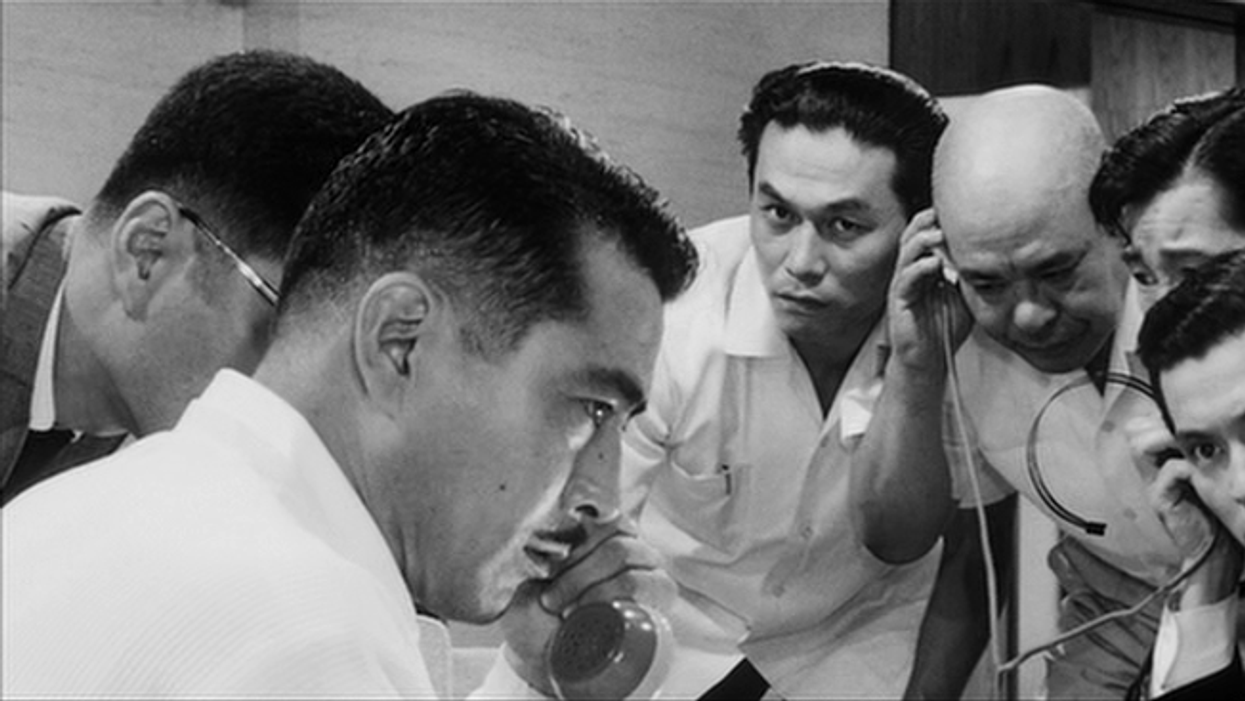3 Things Kurosawa's 'High and Low' Can Teach You about Blocking
Akira Kurosawa was a master filmmaker, especially when it came to blocking.

Once hand-held cameras became all the rage, once in the early 1920s and again in the late 1950s, camera movement became an art form in and of itself. No longer did filmmakers have to bow down to the metallic three-legged beast, known only as "TRIPOD". With the hand-cranked Parvo, 16mm Bolex, or the self-blimped Eclair 16, they were able to maneuver like gymnasts and perform feats of incredible acrobatic prowess without having to worry about fatigue or noisy motors ruining their sound recording.
Since then, camera movement has become the golden boy of cinematography, but there's another type of cinematic movement that is just as effective at telling visual stories and capturing the attention of an audience: the arrangement and movement of on-screen elements, also known as blocking.
So, how can you use blocking to tell better visual stories? In this video essay, the team over at CineFix breaks down three main functions of blocking using one of director Akira Kurosawa's 1963 crime drama High and Low.
Reveal Who Characters Are
We give ourselves away without even knowing it. Our mannerisms, our walk, our speech pattern, and a host of other subconscious movements tell people who we are, what we want, and how we feel, and this is the very thing you can tap into when utilizing blocking. You can tell your audience so much about your characters by having them move from one side of the screen to the other, perform a certain action, or simply remaining still.
Blocking gives characters the chance to communicate their internal emotions and thoughts through their external movements, or as the video says, "act out their feelings."
Of course, good blocking has to be motivated, unless, of course, you're making a musical. Your characters must move in a way that seems natural and inspired by something more than your desire to communicate through it.
Create Tableaus That Speak to Your Audience
Another useful function of blocking is to create evocative images that say something about the story, the scene, or the moment as a whole. On a smaller scale, a character's placement on-screen can say something unique about them individually, but throw in a few other elements—characters, props, and their arrangement in a given space—and pretty soon you have several pieces of the image that coalesce to speak volumes about something bigger than themselves.
In other words, good blocking can allow you to create tableaus, or visual representations, that can be read almost like a piece of literature, informing your audience about a myriad of different aspects of your characters, themes, and even the entire story.
Tell Your Audience Where to Look
One very difficult challenge of creating effective visuals is knowing how to get your audience to look where you want them to when you want them to. Sure, camera movement and close-ups send a pretty clear message to your audience about where their attention should be, but blocking provides plenty of mechanisms to do it, as well. The trick is knowing what those mechanisms are.
Things like character movement, negative space, center-framing, and eye-line help guide your audience's eye to the most important part of the frame. Whatever is in focus, whatever is facing the camera, whatever is talking, whatever is closest, whatever is biggest, whatever is most colorful, whatever is different or contrasted will capture the attention of your viewer.
Want to learn more about the art of blocking? Check out some of these articles from our archive.
Source: CineFix














